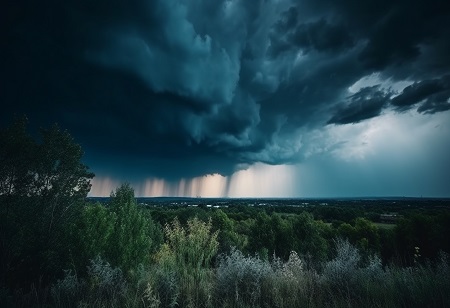
On Nov 9, the head of the project announced that Indian scientists are preparing to seed clouds for the first time in order to induce heavy rainfall in certain areas of New Delhi. The goal is to address the severe smog that has enveloped the world's most polluted capital for an entire week.
Every year before winter arrives, the air quality in Delhi tends to worsen as cold air traps pollutants from vehicles, industries, construction dust, and agricultural waste burning.
Meteorologists anticipate some cloud cover over the city in early November. Manindra Agrawal, a scientist at the Indian Institute of Technology in Kanpur, who is heading the trial, said they are aiming for a size of 20 and a high enough moisture level to induce heavy rain through salt seeding.
Agrawal stated that the project would require 10 million rupees ($120,000) to cover an area of 100 square kilometres (38.6 square miles) and would involve spraying a mix of salts, including silver iodide, into clouds.
He informed Reuters that they were not anticipating a cloud large enough to cover the entire Delhi, but a few hundred kilometres would be satisfactory.
The city's local government, overseeing a population of 20 million across 1,500 square kilometres (579 square miles), has already taken steps to address pollution. Schools have been closed, construction activities halted, and restrictions on vehicle use are in the works. On Thursday morning, the city's air quality index reached 506, a level deemed "hazardous" by Swiss group IQAir.
We use cookies to ensure you get the best experience on our website. Read more...